The Growing Concern Over Water Pollution
Water pollution has emerged as a critical environmental issue that affects not just our ecosystems but also human health on a global scale. As we dive deeper into this topic, it’s essential to understand that water is a vital resource for all forms of life. Yet, every day, our rivers, lakes, and oceans are being tainted by a variety of pollutants, making clean water increasingly scarce. The reality is, the water we often take for granted is under threat, and the implications are dire.
The consequences of water pollution are profound and far-reaching. Imagine a world where the very water we rely on for drinking, bathing, and agriculture is filled with harmful substances. This scenario isn’t just a distant possibility; it’s a growing reality. From industrial waste to agricultural runoff, the sources of water pollution are numerous and complex. Each source contributes to a larger problem, affecting not just aquatic life but also the health of communities that depend on these water bodies.
Moreover, the impact of water pollution is not uniform; it varies from one region to another, influenced by local industries, agricultural practices, and urban development. In some areas, heavy metals and toxic chemicals from factories seep into waterways, while in others, fertilizers and pesticides wash off farms and into rivers. This inconsistency leads to a patchwork of water quality issues that can be overwhelming to address.
As we explore the various aspects of water pollution, it’s crucial to recognize that awareness is the first step towards change. By understanding the causes and effects of water pollution, we can begin to advocate for solutions that protect our precious water resources. From policy reforms to community clean-up efforts, there are numerous ways individuals and organizations can contribute to combating this pressing issue.
In the sections that follow, we will delve into the specific causes of water pollution, examine its devastating effects on both human health and aquatic life, and discuss viable solutions to mitigate this environmental crisis. The journey towards cleaner water starts with knowledge, and together, we can make a difference.
- What are the main causes of water pollution? Water pollution is primarily caused by industrial discharge, agricultural runoff, and urban waste.
- How does water pollution affect human health? Contaminated water can lead to serious health issues, including waterborne diseases.
- What can be done to combat water pollution? Solutions include policy changes, technological advancements, and community involvement in clean-up efforts.
- Is water pollution a global issue? Yes, water pollution affects ecosystems and communities worldwide, making it a pressing global concern.

Understanding Water Pollution
This article explores the various aspects of water pollution, its causes, effects, and potential solutions to address this critical environmental issue affecting ecosystems and human health worldwide.
Water pollution refers to the contamination of water bodies, including rivers, lakes, and oceans, by harmful substances. It's like throwing a party in a pristine environment and then leaving all the trash behind—eventually, the beautiful setting turns into a toxic wasteland. This contamination can occur through a variety of means, leading to severe consequences for both the environment and human health. Understanding the nuances of water pollution is crucial for developing effective strategies to combat it.
When we talk about water pollution, we can categorize it into several types, primarily based on the sources of contamination. These include:
- Chemical Pollution: This involves the introduction of harmful chemicals into water bodies, often from industrial activities.
- Biological Pollution: This type occurs when pathogens, such as bacteria and viruses, enter water systems, posing health risks.
- Physical Pollution: This includes the addition of debris or waste, which can disrupt aquatic ecosystems.
Now, let's break down the sources of water pollution. These can be broadly classified into two categories: point sources and non-point sources. Point sources are identifiable and include specific locations like factories or sewage treatment plants that discharge pollutants directly into water bodies. On the other hand, non-point sources are more diffuse and include agricultural runoff, urban runoff, and atmospheric deposition. It’s like trying to find the source of a leak in a house—some leaks are easy to spot, while others are hidden and require more investigation.
To visualize the impact of water pollution, consider the following table that outlines some common sources, types of pollutants, and their effects:
| Source | Type of Pollutant | Effects |
|---|---|---|
| Industrial Discharge | Toxic Chemicals | Bioaccumulation in aquatic life, health risks to humans |
| Agricultural Runoff | Pesticides & Fertilizers | Eutrophication, harm to aquatic organisms |
| Urban Waste | Plastic & Debris | Physical harm to wildlife, habitat destruction |
Understanding water pollution is not just about grasping the definitions and categories; it’s about recognizing the interconnectedness of our actions and the environment. Each time we make a choice—whether it’s how we dispose of waste or the products we use—we are influencing the health of our water bodies. The journey toward cleaner water starts with awareness and responsibility. So, let’s stay informed and proactive in combating this pressing issue!
1. What are the main causes of water pollution?
The main causes include industrial discharge, agricultural runoff, urban waste, and sewage disposal.
2. How does water pollution affect human health?
Contaminated water can lead to serious health issues, including gastrointestinal diseases, cholera, and other waterborne diseases.
3. What can individuals do to help reduce water pollution?
Individuals can reduce water pollution by properly disposing of waste, using eco-friendly products, and advocating for better waste management practices in their communities.
4. Are there specific regulations in place to combat water pollution?
Yes, many countries have regulations such as the Clean Water Act in the United States, which sets standards for water quality and pollution control.
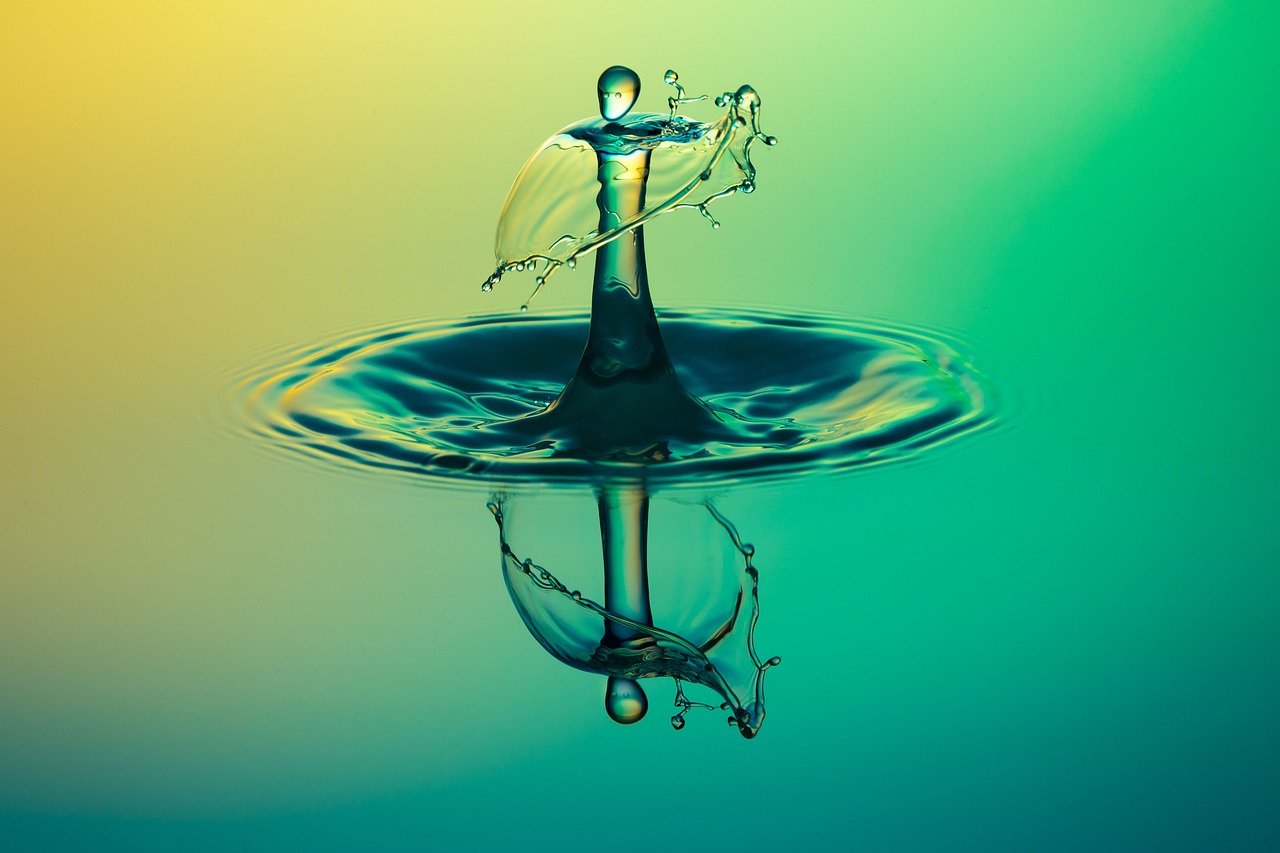
Major Causes of Water Pollution
Water pollution is an alarming issue that stems from a variety of human activities, each contributing to the degradation of our precious water resources. Understanding the major causes of water pollution is crucial in addressing this pressing concern. The contamination of our water bodies can primarily be traced back to three significant sources: industrial discharge, agricultural runoff, and urban waste. Each of these contributors plays a distinct role in polluting the water we rely on for drinking, recreation, and supporting wildlife.
To start with, industrial discharge is one of the most notorious culprits. Factories and manufacturing plants often release waste products directly into rivers and oceans without adequate treatment. This waste can include a myriad of harmful substances, ranging from toxic chemicals to heavy metals. The impact of such pollution is profound, as it not only affects the immediate water quality but also has long-term repercussions on aquatic ecosystems. For instance, many industries discharge substances like solvents, oils, and heavy metals that can accumulate in the food chain, posing risks to both marine life and human health.
When we talk about industrial discharge, it’s essential to highlight the types of pollutants that are often involved. These can be categorized into:
- Toxic Chemicals: These are substances that can cause severe harm to both aquatic life and humans. Many of these chemicals can bioaccumulate, meaning they build up in the bodies of organisms over time, leading to toxicity.
- Heavy Metals: Metals such as lead, mercury, and cadmium are prevalent in industrial waste. They can enter water bodies through runoff or direct discharge, leading to significant environmental challenges.
Next up, let’s dive into agricultural runoff, which is another major contributor to water pollution. As farmers apply fertilizers and pesticides to enhance crop yields, a significant amount of these chemicals can wash away with rainwater or irrigation. This runoff often finds its way into nearby streams, rivers, and lakes, leading to nutrient pollution. The excess nutrients, particularly nitrogen and phosphorus, can cause eutrophication, a process that depletes oxygen in the water and leads to harmful algal blooms. These blooms not only disrupt aquatic ecosystems but also pose serious health risks to humans and animals alike.
Lastly, we cannot overlook urban waste. With increasing urbanization, cities produce vast amounts of waste, much of which ends up in water bodies. Stormwater runoff, sewage discharge, and littering are common practices that contribute to this problem. Urban areas often lack adequate waste management systems, leading to untreated sewage finding its way into rivers and oceans. This not only contaminates the water but also introduces pathogens that can cause waterborne diseases, affecting the health of communities relying on these water sources.
In summary, the major causes of water pollution are intertwined with our daily activities and industrial processes. By understanding these causes, we can take meaningful steps toward mitigating their impact. It’s a collective effort that requires awareness, policy changes, and innovative solutions to protect our water resources for future generations.
Q1: What are the main sources of water pollution?
A1: The main sources include industrial discharge, agricultural runoff, and urban waste. Each of these contributes significantly to the contamination of water bodies.
Q2: How does agricultural runoff affect water quality?
A2: Agricultural runoff introduces fertilizers and pesticides into water bodies, leading to nutrient pollution, which can cause eutrophication and harm aquatic ecosystems.
Q3: What are the health risks associated with water pollution?
A3: Contaminated water can lead to serious health issues, including waterborne diseases, which can be particularly dangerous for vulnerable populations.
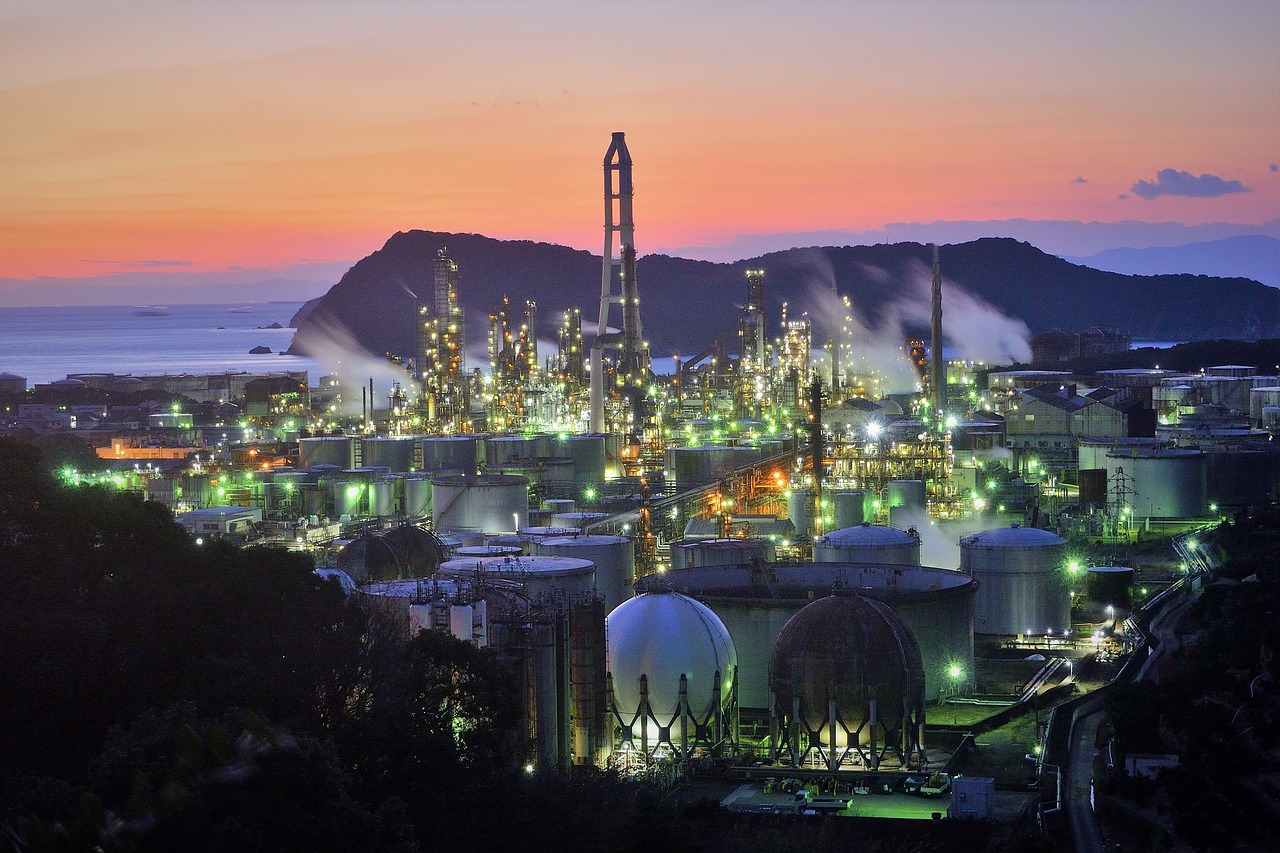
Industrial Discharge
Industrial discharge is one of the most significant contributors to water pollution, and it’s a problem that’s been growing for decades. When we think about factories and manufacturing plants, we often picture bustling assembly lines and the creation of useful products. However, what lurks behind the scenes is a troubling reality: these industries often release a cocktail of harmful substances directly into our water bodies. Imagine a river that once sparkled in the sunlight, now clouded and contaminated by the very processes that are supposed to help us thrive. It’s a stark reminder of the price we pay for progress.
The types of pollutants released can vary widely, but they generally fall into several categories. For instance, toxic chemicals are a major concern. These substances can include solvents, acids, and various organic compounds that are used in industrial processes. Once these chemicals enter the water, they don’t just disappear; they can persist for years, bioaccumulating in the food chain. This means that fish and other aquatic life absorb these toxins, which can ultimately make their way back to us when we consume seafood. The implications for human health are alarming, as exposure to these toxins can lead to serious health issues, including cancers and neurological disorders.
Another critical issue is the presence of heavy metals, such as lead, mercury, and cadmium. These metals often find their way into water bodies through industrial runoff or improper waste disposal. Unlike organic pollutants, heavy metals do not break down over time. Instead, they accumulate in the sediments of rivers and lakes, becoming a persistent threat to aquatic life. The table below outlines the sources and impacts of some common heavy metals found in industrial discharge:
| Heavy Metal | Common Sources | Environmental Impact |
|---|---|---|
| Lead | Battery manufacturing, plumbing | Neurotoxic effects on fish and wildlife |
| Mercury | Coal burning, industrial waste | Bioaccumulation leading to health risks in predators |
| Cadmium | Batteries, metal plating | Soil and water contamination affecting plant growth |
These pollutants not only threaten aquatic ecosystems but also pose challenges for water treatment facilities. As they work to provide clean drinking water, these facilities must contend with the presence of heavy metals and toxic chemicals, which require advanced and often expensive treatment processes. It’s a vicious cycle: industries discharge pollutants, and in turn, communities must invest in increasingly sophisticated ways to ensure their water is safe.
In conclusion, the issue of industrial discharge is a complex and pressing concern that demands immediate attention. The effects of these pollutants ripple through ecosystems, affecting not just the water we drink but also the air we breathe and the food we eat. As we navigate the challenges posed by industrialization, it’s vital that we advocate for stricter regulations and more sustainable practices. After all, our health and the health of our planet depend on the choices we make today.
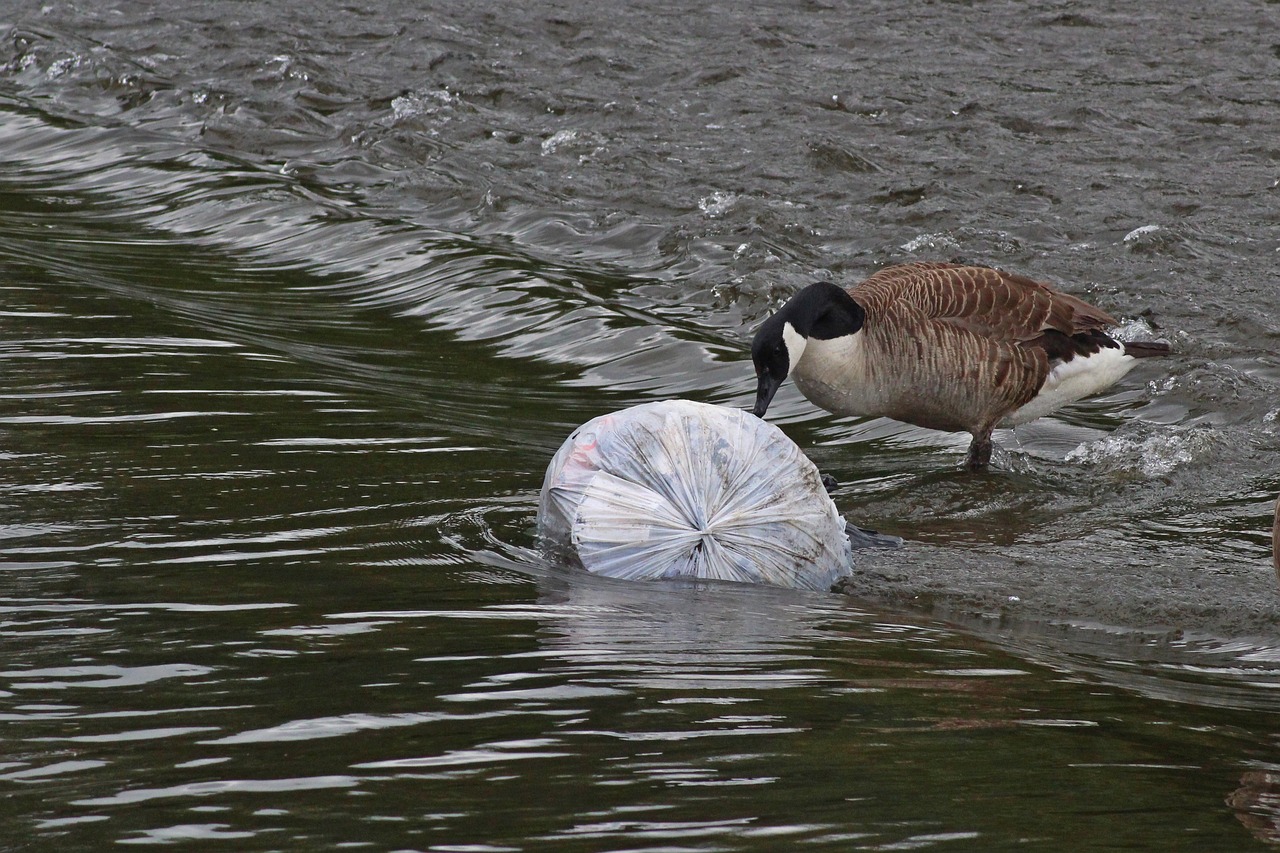
Toxic Chemicals
Toxic chemicals released into water bodies are a significant concern for both the environment and public health. These harmful substances, often originating from industrial processes, agricultural runoff, and urban waste, can have devastating effects on aquatic ecosystems. When these chemicals enter our rivers, lakes, and oceans, they not only contaminate the water but also accumulate in the bodies of aquatic organisms, leading to a phenomenon known as bioaccumulation. This process poses serious risks not only to aquatic life but also to humans who consume fish and seafood from polluted waters.
One of the most alarming aspects of toxic chemicals is their ability to persist in the environment. Unlike organic pollutants that may degrade over time, many toxic substances can remain in water systems for years, continuously posing a threat. For instance, chemicals like polychlorinated biphenyls (PCBs) and dioxins are notorious for their long-lasting presence in ecosystems, making them particularly challenging to manage. The implications of this are profound, as these persistent pollutants can disrupt the hormonal systems of fish and other wildlife, leading to reproductive issues and population declines.
Moreover, the impact of toxic chemicals extends beyond aquatic life. When these substances enter the food chain, they can affect human health as well. Consuming contaminated fish can lead to a range of health issues, including neurological disorders and increased cancer risks. The following table summarizes some common toxic chemicals found in water bodies and their associated health risks:
| Chemical | Source | Health Risks |
|---|---|---|
| Mercury | Industrial discharge, mining | Neurological damage, developmental issues |
| Lead | Old pipes, industrial waste | Brain damage, kidney problems |
| PCBs | Electrical equipment, industrial processes | Cancer, hormonal disruption |
| Dioxins | Waste incineration, chemical manufacturing | Immune system damage, reproductive issues |
In conclusion, the presence of toxic chemicals in our water systems is a pressing issue that requires immediate attention. We must advocate for stricter regulations on industrial discharges and promote the use of safer alternatives in agricultural practices. By raising awareness and pushing for policy changes, we can work towards a future where our water bodies are free from these harmful substances, ensuring the health of both our ecosystems and ourselves. So, what can you do to help? Start by being conscious of the products you use and support local initiatives aimed at cleaning up our waterways.
- What are the main sources of toxic chemicals in water? Toxic chemicals primarily come from industrial discharges, agricultural runoff, and urban waste.
- How do toxic chemicals affect human health? They can lead to serious health issues such as neurological disorders, reproductive problems, and increased cancer risks.
- What can be done to reduce water pollution caused by toxic chemicals? Stricter regulations, better waste management practices, and community awareness programs are essential to combat this issue.

Heavy Metals
Heavy metals, such as lead, mercury, cadmium, and arsenic, are notorious for their detrimental effects on both the environment and human health. These metals are often released into water bodies through various industrial processes, mining activities, and even household waste. The alarming part? They do not break down easily and can persist in the environment for long periods, accumulating in the sediments of rivers, lakes, and oceans. This accumulation can lead to severe ecological imbalances and health risks for those who consume contaminated water or aquatic life.
One of the most concerning aspects of heavy metal pollution is its bioaccumulation in the food chain. When smaller organisms, such as fish and shellfish, absorb these toxic metals, they can concentrate in their bodies. As larger predators consume these smaller organisms, the concentration of heavy metals increases, leading to a phenomenon known as biomagnification. This means that top predators, including humans, may end up with significantly higher levels of these harmful substances. Imagine a tiny fish swimming in a polluted lake; it may not seem like much, but as it gets eaten by a larger fish, and then that fish is consumed by a bird or a human, the toxic effects multiply exponentially.
Here are some of the most common heavy metals found in polluted water and their sources:
| Heavy Metal | Common Sources | Health Effects |
|---|---|---|
| Lead | Industrial discharge, old plumbing | Neurological damage, developmental issues in children |
| Mercury | Coal burning, mining | Kidney damage, neurological disorders |
| Cadmium | Battery manufacturing, metal plating | Bone fragility, kidney damage |
| Arsenic | Pesticides, mining | Cancer, skin lesions |
The implications of heavy metal contamination extend beyond immediate health risks. The ecosystem suffers as well; aquatic life can experience reduced reproductive rates, altered behavior, and even extinction. This creates a ripple effect, impacting biodiversity and the overall health of aquatic ecosystems. Furthermore, contaminated water bodies can lead to restrictions on fishing and recreational activities, affecting local economies that rely on these resources.
Addressing heavy metal pollution requires a multi-pronged approach. Monitoring water quality, enforcing stricter regulations on industrial waste, and promoting sustainable agricultural practices are essential steps. Moreover, community awareness and involvement play a crucial role in tackling this issue. By understanding the sources and effects of heavy metals, individuals can advocate for cleaner water and healthier ecosystems.
- What are heavy metals? Heavy metals are metallic elements that have a high density and are toxic at low concentrations. Common examples include lead, mercury, and cadmium.
- How do heavy metals enter water bodies? They can enter through industrial discharges, agricultural runoff, mining activities, and improper waste disposal.
- What are the health effects of heavy metal exposure? Exposure can lead to serious health issues such as neurological damage, kidney problems, and increased cancer risk.
- How can we reduce heavy metal pollution? Implementing stricter environmental regulations, promoting eco-friendly practices, and raising public awareness are effective ways to combat this issue.

Agricultural Runoff
Agricultural runoff is a significant contributor to water pollution, often overlooked in discussions about environmental degradation. When it rains, or when irrigation practices are employed, excess water carries away fertilizers, pesticides, and other chemicals from farmlands into nearby rivers, lakes, and oceans. This process is akin to a sponge soaking up water; once it’s saturated, the excess simply drips away, taking with it harmful substances that can wreak havoc on aquatic ecosystems.
The application of fertilizers, which are rich in nitrogen and phosphorus, is intended to boost crop yields. However, when these nutrients wash into water bodies, they can lead to a phenomenon known as eutrophication. This process causes an overgrowth of algae, known as algal blooms, which can produce toxins harmful to both marine life and humans. Imagine a lush green blanket covering the surface of a lake—while it may look picturesque, it actually suffocates aquatic plants and depletes oxygen levels, leading to dead zones where life can no longer thrive.
Moreover, pesticides used to control pests and diseases can also find their way into water sources. These chemicals are designed to be lethal to unwanted organisms, but they can also affect non-target species, including fish and other wildlife. The consequences can be dire, as these substances can accumulate in the food chain, ultimately impacting human health as well. For instance, consuming fish contaminated with pesticides can lead to serious health issues, including hormonal disruptions and increased cancer risk.
To illustrate the impact of agricultural runoff, consider the following table that outlines the common pollutants found in agricultural runoff and their effects:
| Pollutant | Source | Effect on Water Quality |
|---|---|---|
| Nitrogen | Fertilizers | Eutrophication leading to algal blooms |
| Phosphorus | Fertilizers | Oxygen depletion in water bodies |
| Pesticides | Crop protection chemicals | Toxic effects on aquatic life and humans |
| Heavy Metals | Soil erosion and runoff | Bioaccumulation in the food chain |
Addressing agricultural runoff requires a concerted effort from farmers, policymakers, and communities alike. Implementing best management practices, such as buffer strips, cover crops, and proper fertilizer application techniques, can significantly reduce the amount of pollutants entering our water systems. It's essential for farmers to adopt sustainable practices that not only enhance productivity but also protect our precious water resources.
In conclusion, agricultural runoff is a complex issue that poses a significant threat to water quality and ecosystem health. By understanding its causes and effects, we can work together to find solutions that benefit both agriculture and the environment. Are we ready to take action and protect our waterways for future generations?
- What is agricultural runoff?
Agricultural runoff refers to water that flows over agricultural land, carrying away fertilizers, pesticides, and other pollutants into nearby water bodies. - How does agricultural runoff affect water quality?
It can lead to nutrient pollution, causing eutrophication and toxic algal blooms, which harm aquatic life and disrupt ecosystems. - What can be done to reduce agricultural runoff?
Farmers can implement best management practices such as buffer strips, cover crops, and careful fertilizer application to minimize runoff. - Why is it important to address agricultural runoff?
Addressing agricultural runoff is crucial to protect water quality, ensure safe drinking water, and maintain healthy ecosystems.
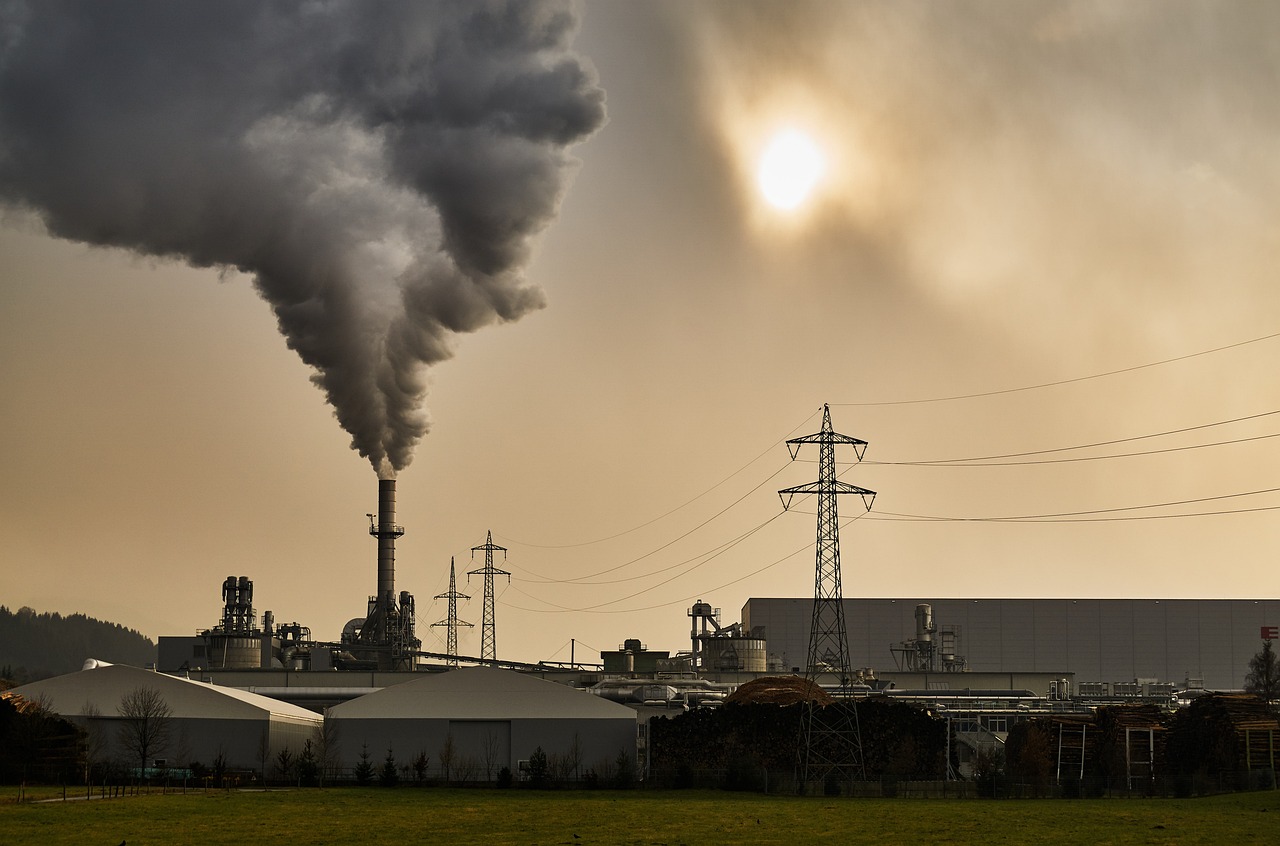
Effects of Water Pollution
Water pollution is not just a distant problem; it's a pressing issue that affects us all, and its effects ripple through our ecosystems and communities like a stone thrown into a pond. When we think about pollution, we often picture a dirty river or a plastic-laden beach, but the consequences of water pollution run much deeper. From the water we drink to the food we eat, polluted water can have dire impacts on human health, wildlife, and the environment at large. The urgency to address these effects cannot be overstated, as they threaten our very existence and the delicate balance of life on Earth.
To truly grasp the impact of water pollution, we need to consider its effects on both human health and aquatic life. Contaminated water can lead to a variety of serious health issues, which often go unnoticed until it's too late. For instance, waterborne diseases such as cholera, dysentery, and typhoid fever can stem from consuming or coming into contact with polluted water sources. These diseases disproportionately affect vulnerable populations, particularly in developing countries, where access to clean water is already limited. The World Health Organization estimates that approximately 2 billion people globally use a drinking water source contaminated with feces, leading to numerous health crises.
Furthermore, the effects of water pollution extend beyond human health; they wreak havoc on aquatic ecosystems as well. When pollutants enter water bodies, they disrupt the delicate balance of life, affecting everything from the tiniest microorganisms to the largest marine mammals. For example, high levels of nitrogen and phosphorus from agricultural runoff can lead to algal blooms, which deplete oxygen levels in the water, creating "dead zones" where aquatic life cannot survive. This not only threatens fish populations but also impacts the livelihoods of communities that depend on fishing and tourism.
To illustrate the dire consequences of water pollution, consider the following table that summarizes the key effects:
| Effect | Description |
|---|---|
| Human Health Risks | Increased incidence of waterborne diseases, gastrointestinal issues, and long-term health complications. |
| Impact on Aquatic Life | Disruption of food chains, loss of biodiversity, and extinction of vulnerable species. |
| Economic Consequences | Decline in fishing and tourism industries, leading to loss of jobs and economic instability in affected regions. |
| Environmental Degradation | Destruction of habitats, increased sedimentation, and alteration of natural water cycles. |
In summary, the effects of water pollution are profound and multifaceted. They extend from immediate health risks to long-term environmental damage, affecting both our planet and our communities. As stewards of the Earth, it is imperative that we acknowledge these consequences and take action to mitigate them. The health of our water bodies directly correlates with the health of our ecosystems and, ultimately, our own well-being. Ignoring the signs of pollution is akin to ignoring a slow leak in a dam; if left unchecked, it can lead to catastrophic failure.
- What are the main causes of water pollution? The primary causes include industrial discharge, agricultural runoff, urban waste, and plastic pollution.
- How can water pollution affect human health? Contaminated water can lead to serious health issues, including waterborne diseases and long-term health complications.
- What can be done to combat water pollution? Solutions include policy changes, technological advancements, community clean-up efforts, and increased awareness about sustainable practices.
- Why is it important to address water pollution? Addressing water pollution is crucial for protecting ecosystems, ensuring public health, and maintaining economic stability in communities that rely on clean water.
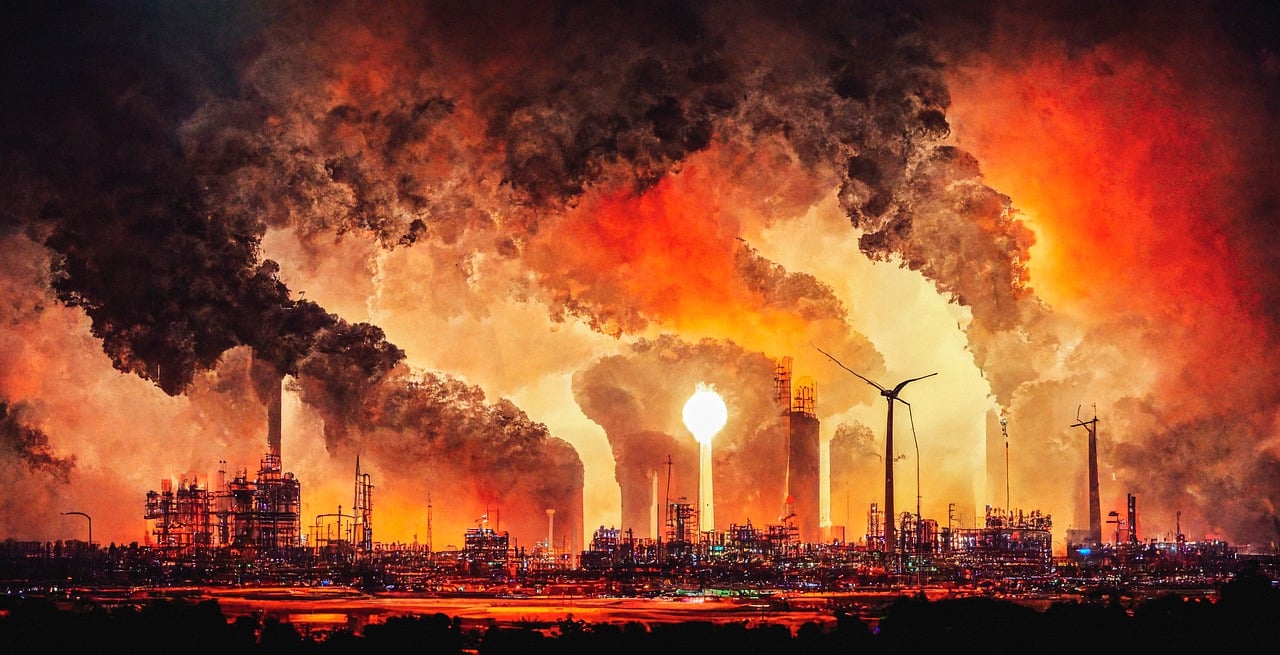
Impact on Human Health
Water pollution is not just an environmental concern; it is a significant threat to human health that can have devastating consequences. When we think about clean water, we often take it for granted, but the reality is that millions of people around the world are exposed to contaminated water every day. This exposure can lead to a variety of health issues, many of which are severe and long-lasting. Imagine drinking a glass of water that is supposed to quench your thirst, only to find out it’s laced with harmful bacteria or toxic chemicals. It’s a scary thought!
One of the most alarming effects of water pollution is the rise in waterborne diseases. These diseases are caused by pathogens that thrive in contaminated water, and they can lead to serious health complications. Some common waterborne diseases include:
- Cholera: A severe diarrheal illness caused by the bacterium Vibrio cholerae.
- Typhoid Fever: Caused by Salmonella typhi, it can lead to high fever and abdominal pain.
- Hepatitis A: A viral infection that affects the liver and can cause jaundice.
These diseases can be particularly dangerous for vulnerable populations, such as children and the elderly, who may have weaker immune systems. According to the World Health Organization (WHO), approximately 2 billion people globally use a drinking water source contaminated with feces, leading to countless preventable deaths each year. This statistic underscores the urgency of addressing water pollution as a public health crisis.
Moreover, the impact of water pollution extends beyond immediate health issues. Long-term exposure to contaminated water can lead to chronic conditions. For instance, heavy metals like lead and mercury, often found in polluted water, can accumulate in the body over time, leading to serious health problems such as:
- Neurological damage: Particularly in children, exposure to lead can impair cognitive development.
- Kidney damage: Heavy metals can cause long-term harm to kidney function.
- Cancer: Certain pollutants are classified as carcinogens, increasing the risk of various cancers.
In addition to these health risks, water pollution can also have indirect effects on mental health. The stress and anxiety associated with the fear of consuming contaminated water can take a toll on individuals and communities. Imagine living in a place where you can’t trust the water coming from your tap. The psychological burden can be just as heavy as the physical ailments caused by pollution.
Furthermore, the economic implications of water pollution cannot be overlooked. The costs associated with treating waterborne diseases, healthcare expenses, and lost productivity due to illness can strain both families and healthcare systems. In many developing countries, this creates a vicious cycle of poverty and health issues that is hard to escape.
In conclusion, the impact of water pollution on human health is profound and multifaceted. It is a pressing issue that requires immediate action from governments, communities, and individuals alike. By understanding the risks associated with contaminated water, we can advocate for cleaner water sources and better public health policies. After all, clean water is a basic human right, and everyone deserves access to it.
1. What are the main sources of water pollution?
Water pollution primarily comes from industrial discharge, agricultural runoff, sewage and wastewater, and plastic waste. Each of these sources introduces harmful substances into our water bodies.
2. How can I tell if my water is contaminated?
Signs of contaminated water can include unusual odors, discoloration, or the presence of sediment. However, the best way to ensure water safety is through regular testing.
3. What can I do to help reduce water pollution?
Individuals can contribute by reducing plastic use, properly disposing of chemicals, and advocating for stronger environmental regulations. Every small action counts!
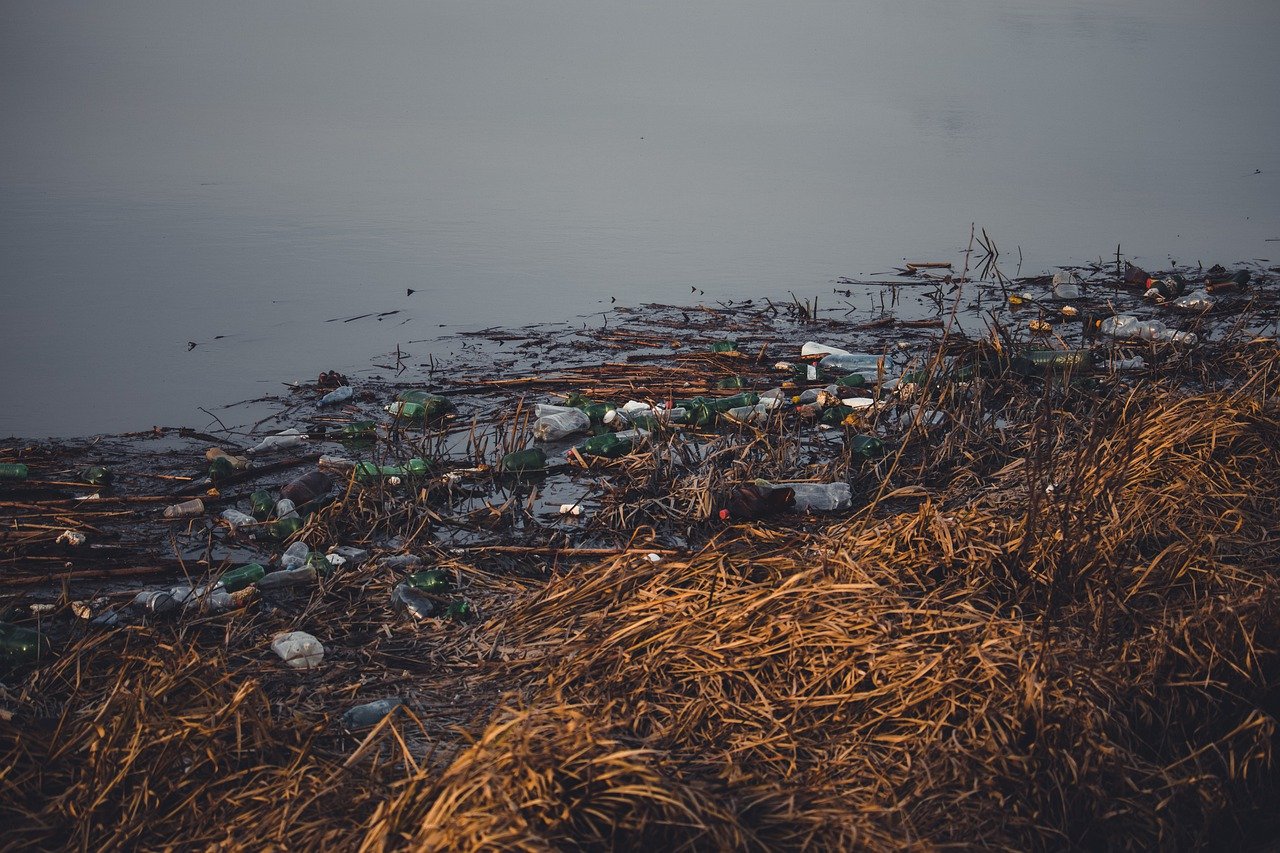
Effects on Aquatic Life
Water pollution is not just a problem for humans; it poses a significant threat to aquatic life, disrupting the delicate balance of ecosystems that thrive in our rivers, lakes, and oceans. The introduction of harmful substances into these habitats can have devastating effects, leading to a chain reaction that impacts not only individual species but entire ecosystems. Imagine a beautiful coral reef, once vibrant and full of life, now struggling to survive due to pollution. This scenario is becoming all too common as pollutants seep into our waters.
One of the most alarming effects of water pollution is the decline in biodiversity. Pollutants can create an environment that is inhospitable for many species, leading to a reduction in population sizes and, in some cases, extinction. For instance, the introduction of heavy metals and toxic chemicals can cause physiological changes in fish and other aquatic organisms, making it difficult for them to reproduce and thrive. When key species begin to disappear, it can lead to a domino effect, altering food webs and disrupting the entire ecosystem.
Furthermore, pollutants can accumulate in the bodies of aquatic organisms, a process known as bioaccumulation. This means that as smaller organisms absorb toxins, they become a food source for larger predators. Over time, these toxins can concentrate in the tissues of larger fish and marine mammals, leading to severe health issues. For example, fish that are high in the food chain, like tuna and swordfish, often have dangerously high levels of mercury due to their diet. This not only affects the fish themselves but also poses risks to humans who consume them.
Another critical aspect to consider is the impact of nutrient pollution, primarily from agricultural runoff. When fertilizers and pesticides wash into water bodies, they can lead to algal blooms, which deplete oxygen levels in the water. This phenomenon, known as hypoxia, creates "dead zones" where aquatic life cannot survive. The Gulf of Mexico is a prime example, where nutrient runoff from the Mississippi River has created one of the largest dead zones in the world, significantly affecting local fishing industries and marine biodiversity.
In summary, the effects of water pollution on aquatic life are profound and far-reaching. From the loss of biodiversity to the health risks posed by bioaccumulation, the consequences are dire. It’s crucial for us to understand that our actions on land directly impact life in the water. By addressing water pollution, not only do we protect aquatic ecosystems, but we also safeguard our own health and the health of future generations.
- What are the main causes of water pollution? Water pollution is primarily caused by industrial discharge, agricultural runoff, urban waste, and oil spills.
- How does water pollution affect human health? Contaminated water can lead to serious health issues, including gastrointestinal diseases, reproductive problems, and neurological disorders.
- What can be done to reduce water pollution? Solutions include stricter regulations on waste disposal, promoting sustainable agricultural practices, and increasing public awareness about pollution prevention.
- How does pollution affect marine ecosystems? Pollution disrupts food webs, reduces biodiversity, and can lead to the extinction of sensitive species.
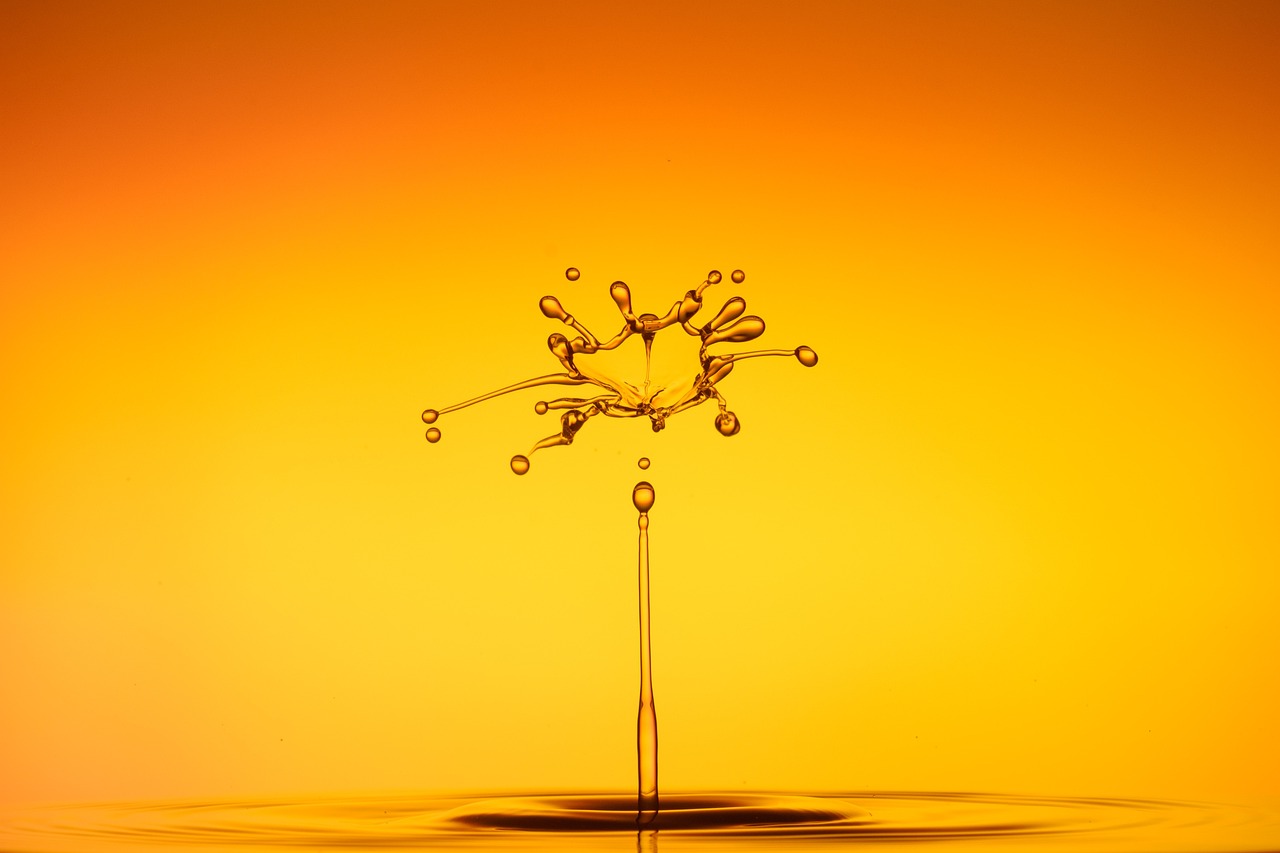
Solutions to Combat Water Pollution
Combating water pollution is not just a responsibility; it’s a necessity for the survival of our ecosystems and the health of future generations. Tackling this issue requires a multi-faceted approach that integrates policy changes, technological advancements, and active community involvement. First and foremost, government policies play a crucial role. Stricter regulations on industrial discharges can significantly reduce the amount of harmful substances entering our water bodies. Governments should implement and enforce laws that limit pollution levels and hold companies accountable for violations. This is not just about creating laws; it’s about ensuring that these laws are followed and that there are real consequences for those who fail to comply.
In addition to regulatory measures, the adoption of green technologies is essential. Industries can invest in cleaner production techniques and waste treatment solutions that minimize waste output. For instance, many companies are now turning to bioremediation, a process that uses microorganisms to break down pollutants in water. This not only cleans up contaminated sites but also reduces the reliance on harmful chemicals. Moreover, the development of advanced filtration systems can help in treating wastewater before it is released back into the environment. By using technologies like reverse osmosis and membrane filtration, we can ensure that the water we return to rivers and lakes is safe and clean.
On an individual level, community involvement is crucial. Local communities can organize clean-up drives to remove trash and debris from rivers, lakes, and beaches. Such initiatives not only help in cleaning the water bodies but also raise awareness about the importance of keeping our waters clean. Community education programs can empower individuals to understand their role in preventing water pollution. Simple actions, like reducing plastic use, properly disposing of hazardous waste, and using eco-friendly products, can collectively make a significant impact. It’s often said that “many hands make light work,” and when communities unite for a common cause, the results can be astonishing.
Furthermore, agricultural practices must evolve to reduce runoff. Farmers can adopt sustainable practices such as crop rotation, cover cropping, and organic farming to minimize the use of chemical fertilizers and pesticides. These methods not only enhance soil health but also reduce the likelihood of harmful substances leaching into waterways. By implementing buffer zones—areas of vegetation near water bodies—farmers can significantly decrease runoff and filter pollutants before they reach the water.
To truly make a difference, it's also important to invest in public infrastructure. Upgrading sewage systems to prevent overflow during heavy rains can significantly reduce the amount of untreated sewage that enters our water bodies. Additionally, creating more green spaces in urban areas can help absorb rainwater and reduce runoff, acting as a natural filtration system.
In summary, the solutions to combat water pollution are as diverse as the problem itself. By combining regulatory measures, technological innovation, community engagement, sustainable agricultural practices, and infrastructure improvements, we can create a comprehensive strategy to protect our precious water resources. It’s a collective effort that requires all of us to take action—not just for ourselves, but for the planet and future generations.
Q1: What are the main sources of water pollution?
A1: The main sources of water pollution include industrial discharges, agricultural runoff, sewage and wastewater, and plastic waste. Each of these sources contributes significantly to the contamination of our water bodies.
Q2: How can individuals help reduce water pollution?
A2: Individuals can help reduce water pollution by using less plastic, properly disposing of chemicals, participating in local clean-up events, and advocating for stronger environmental policies.
Q3: What are the health risks associated with water pollution?
A3: Water pollution can lead to serious health issues, including gastrointestinal diseases, reproductive problems, and neurological disorders, especially when contaminated water is consumed.
Q4: Are there technologies that can help clean water?
A4: Yes, technologies such as bioremediation, advanced filtration systems, and eco-friendly waste treatment methods can significantly improve water quality and help in cleaning polluted water bodies.
Frequently Asked Questions
- What is water pollution?
Water pollution is the contamination of water bodies such as rivers, lakes, and oceans by harmful substances. This can include chemicals, waste, and other pollutants that negatively impact water quality and aquatic life.
- What are the main causes of water pollution?
The primary causes of water pollution include industrial discharge, agricultural runoff, and urban waste. These activities introduce various pollutants into water systems, leading to significant environmental and health issues.
- How do industrial activities contribute to water pollution?
Industries often release toxic chemicals and heavy metals directly into water bodies during manufacturing processes. This not only contaminates the water but also poses serious risks to aquatic ecosystems and human health.
- What are the health risks associated with polluted water?
Consuming contaminated water can lead to serious health problems, including waterborne diseases such as cholera and dysentery. Long-term exposure to pollutants can also result in chronic health issues.
- How does agricultural runoff affect water quality?
Agricultural runoff carries fertilizers, pesticides, and other chemicals into nearby water bodies, leading to nutrient pollution and harmful algal blooms. This can severely disrupt aquatic ecosystems and degrade water quality.
- What are heavy metals, and why are they a concern?
Heavy metals like lead and mercury are toxic pollutants often released by industrial activities. They can accumulate in the food chain, posing significant health risks to humans and wildlife alike.
- What can be done to combat water pollution?
Addressing water pollution requires a combination of policy changes, technological innovations, and community engagement. Solutions may include stricter regulations, better waste management practices, and public education on pollution prevention.
- How does water pollution impact aquatic life?
Water pollution disrupts the natural balance of aquatic ecosystems, harming species survival and biodiversity. Pollutants can lead to habitat destruction, reproductive issues, and even extinction of sensitive species.



















